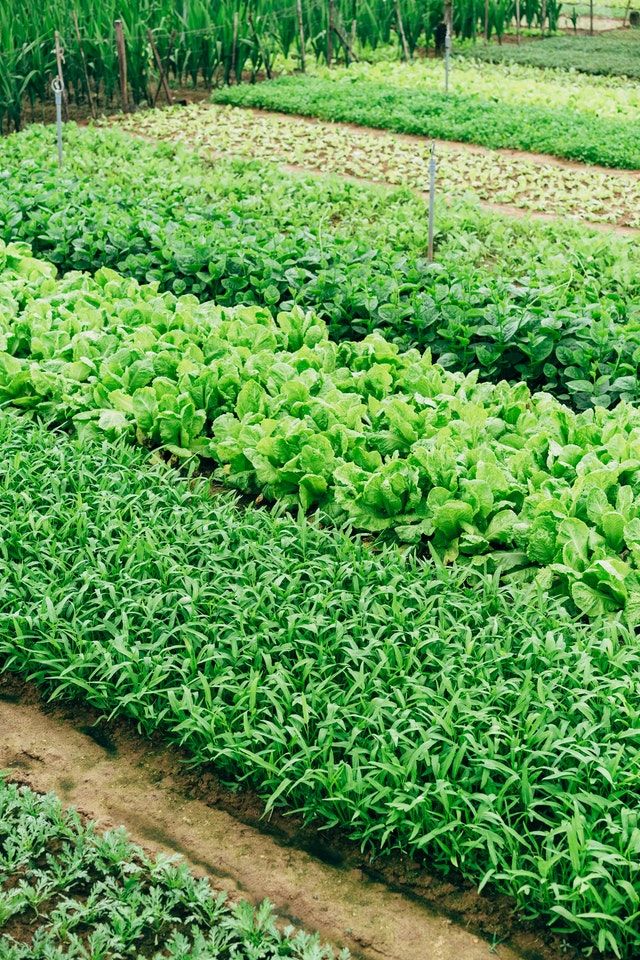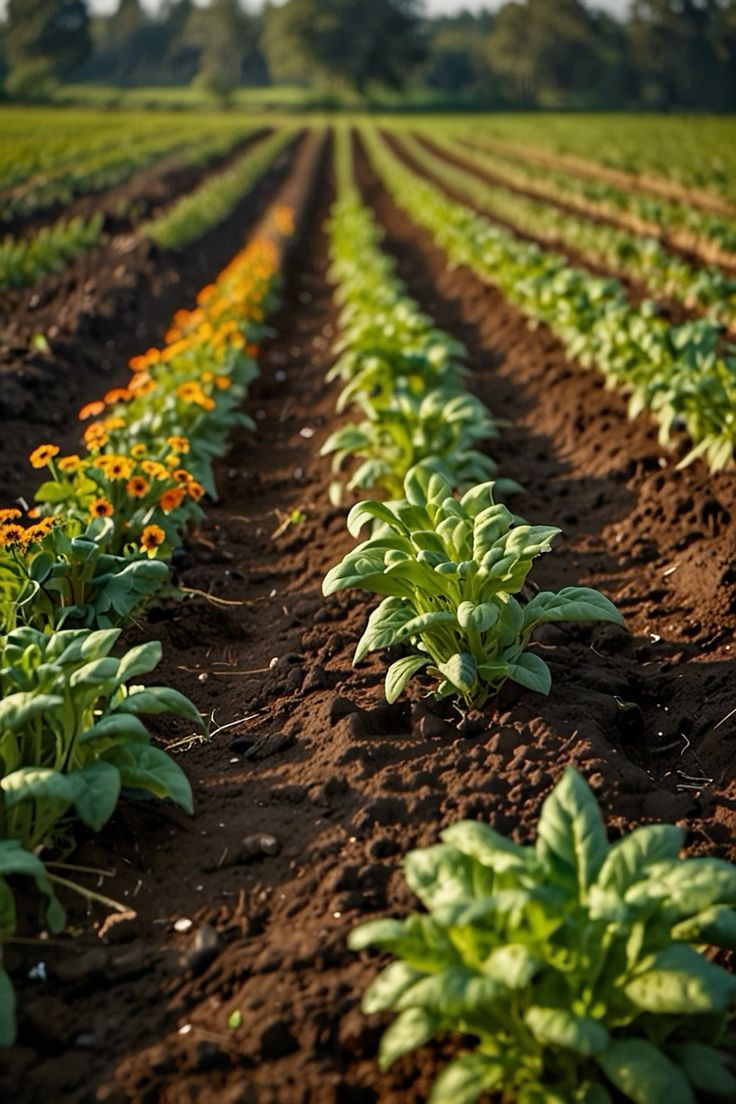Introduction to Intercropping
Intercropping is a farming method where two or more crops are grown together in the same field. This technique has been practiced for centuries, especially by traditional farmers. The main idea is to plant different crops side by side to make better use of space, nutrients, and resources.

This method offers several benefits, such as increasing crop yields, improving soil health, and controlling pests naturally. For small farmers or those practicing sustainable farming, intercropping can be a game-changer.
In this guide, we will explore the basics of intercropping and how it can help you boost your farm yield.
What is Intercropping?
Intercropping simply means growing different types of crops in the same area. These crops are usually chosen carefully to complement each other.

For example, a farmer might plant a deep-rooted crop alongside a shallow-rooted crop. This allows both crops to use different layers of soil, maximizing the nutrients available.
There are different ways to practice intercropping:
- Row Intercropping: Planting crops in alternating rows.
- Mixed Intercropping: Growing crops randomly without a specific pattern.
- Strip Intercropping: Planting crops in wide strips so that one crop doesn’t dominate the other.
- Relay Intercropping: Planting one crop and adding another crop before the first one is harvested.
Each type has its advantages and can be chosen based on the needs of the farmer.
Benefits of Intercropping

-
Increased Yield
One of the biggest benefits of intercropping is a higher overall yield. By planting multiple crops together, farmers can produce more food from the same land. Different crops use the land in various ways, so they don’t compete too much with each other. This means that farmers can grow more food on the same piece of land, increasing their income and food supply.
-
Better Soil Health
Intercropping helps improve soil health by reducing the risk of soil depletion. Different crops have different nutrient needs and root systems, which can reduce the strain on the soil. Some crops, like legumes, can even fix nitrogen in the soil, which benefits other plants. This leads to richer and healthier soil in the long term.
-
Natural Pest Control
When the same type of crop is planted over a large area, pests can easily find their favorite plants to attack. However, in intercropping systems, different plants are grown together, which confuses pests and makes it harder for them to spread.
This natural form of pest control reduces the need for chemical pesticides.
-
Risk Reduction
Growing more than one crop at the same time reduces the risk of losing an entire harvest. If one crop fails due to disease, pests, or bad weather, the other crops may still survive. This diversification helps farmers reduce the impact of unexpected challenges.
-
Efficient Use of Resources
Different crops have different requirements for sunlight, water, and nutrients. By growing crops together that don’t compete for the same resources, farmers can make the most of their water and soil nutrients. For example, taller plants can provide shade for crops that prefer less sunlight.
Choosing the Right Crops for Intercropping
To get the most out of intercropping, it’s essential to choose the right crops. Some crops work well together, while others may compete for resources.

Here are some general tips for selecting crops for intercropping:
- Complementary Root Systems: Choose crops with different root depths. For example, deep-rooted plants like corn can be paired with shallow-rooted crops like beans.
- Different Nutrient Needs: Select crops that don’t compete for the same nutrients. For example, planting a nitrogen-fixing crop like peas with a nitrogen-demanding crop like wheat can improve the overall nutrient balance.
- Varied Growth Patterns: Combine tall and short crops to make the most of vertical space. Tall crops can provide shade for plants that need less sunlight.
- Staggered Maturity: Choose crops that mature at different times, so they don’t compete for resources at the same stage of growth.
Some popular intercropping combinations include:
- Corn and Beans: Corn provides support for climbing beans, and beans add nitrogen to the soil.
- Carrots and Onions: Carrots grow deep in the soil, while onions grow closer to the surface, so they don’t compete for space.
- Tomatoes and Basil: Tomatoes benefit from the pest-repelling properties of basil, while both crops thrive together.
How to Implement Intercropping on Your Farm

-
Start Small
If you are new to intercropping, it’s a good idea to start with a small area of your farm. Experiment with different crop combinations to see what works best for your land and climate.
-
Plan Your Layout
Decide on the layout you will use. You can plant in rows, strips, or a mixed pattern depending on your crops. Make sure to give each plant enough space to grow and access sunlight.
-
Monitor Your Crops
Keep an eye on your crops to ensure they are growing well together. Make adjustments if you notice that one crop is dominating or if there are signs of nutrient deficiency.
-
Use Organic Practices
To fully benefit from intercropping, try to avoid using chemical fertilizers and pesticides. Instead, focus on natural solutions like compost and organic pest control methods to support the health of your crops and soil.
-
Rotate Your Crops
Rotating crops is essential for long-term success with intercropping. Change the crops you plant in each area of your farm every season to prevent soil depletion and break the cycle of pests and diseases.
Challenges of Intercropping
While intercropping has many benefits, it’s not without its challenges. Some of the common issues farmers face include:
- Increased Labor: Intercropping may require more planning, planting, and harvesting. Each crop needs to be managed individually, which can increase the amount of work for the farmer.
- Competition for Resources: If crops are not chosen carefully, they may compete for water, sunlight, or nutrients, reducing overall yield.
- Difficulty in Mechanization: Many modern farming tools and machinery are designed for monocropping (planting one crop at a time). Intercropping can make it harder to use such equipment, especially for harvesting.
Despite these challenges, with proper planning and management, intercropping can offer significant rewards.
Conclusion
Intercropping is a powerful farming technique that can help you boost your farm yield, improve soil health, and reduce the need for chemical inputs. By carefully selecting crops that work well together and using organic practices, farmers can grow more food sustainably.
Whether you are a small farmer or a large-scale grower, intercropping offers a smart and efficient way to make the most of your land. Start small, experiment with different combinations, and watch your farm thrive with this time-tested method.

👍👍
Pingback: Why Sustainable Farming Can Help You Save Money Long Term
Pingback: 7 Key principles of ZBNF